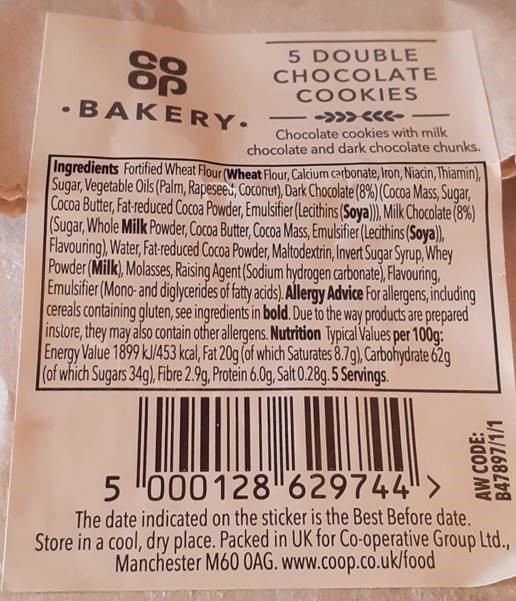Food Labelling has Changed – Natasha’s Law

This article will take approximately 2 minutes to read
Published 5 Oct 2021 in Raising Awareness
You may have heard in 2016 when 15-year-old Natasha Ednan-Laperouse sadly passed away after eating a baguette from a high street retailer. Well, with many dietary and allergy requirements related to all of us, there’s been a change in the law to Food labelling this month. Read today’s story on what we are doing in-store in line with the recent legal requirements.
How has labelling changed?
Following the change in legislation from 1st October 2021, you can expect to see Food labels with all the ingredients listed separately and all the allergens highlighted in the list, either in Bold type or by capital letters.
This means all Prepacked food must have an ingredients list that can be identified by a suitable heading and includes the word ‘ingredients'. Any of the 14 allergens must be emphasised in a way that clearly distinguishes these from the rest of the ingredients every time they appear in the ingredients list. For example, allergens can be highlighted in bold, capital letters or a different colour font.
Ultimately, all Food businesses must tell their customers if any food they sell or provide, contains any of the main 14 allergens as an ingredient.
Over the last few weeks, our Food Retail colleagues have been working hard in preparation for this new law to ensure we are 100% compliant with the extremely important changes. There has also been signage created to alert customers to ask for information if they need it.

What is a Food Allergy?
A food allergy is when the body’s immune system, mistakenly treats the protein in food as a threat. The body responds to this threat by releasing a number of chemicals in the body. These chemicals cause the symptoms of an allergic reaction
In school-aged children, cow's milk is now the most common single cause of fatal anaphylaxis, accounting for 26% of all allergy related deaths.
The most common symptoms of an allergic reaction include:
- tingling or itching in the mouth
- a raised, itchy red rash (hives) – in some cases, the skin can turn red and itchy, but without a raised rash
- swelling of the face, mouth, throat or other areas of the body
- difficulty swallowing • wheezing or shortness of breath • feeling dizzy and lightheaded
- feeling sick or vomiting
- abdominal pain or diarrhoea
- hay fever-like symptoms, such as sneezing or itchy eyes
What is Natasha’s Law?
In 2016, 15-year-old Natasha Ednan-Laperouse died after eating a baguette bought from a high street retailer at Heathrow airport. Natasha had an allergy to sesame. Sesame flour had been used in the bread dough, but this was not listed on the sandwich label, and she tragically died on the plane. She suffered an anaphylactic attack which is a life-threatening allergic reaction known as Anaphylaxis.
At the time the retailer was not breaking the Law with their labelling. Since then her parents have set up the foundation to raise money to find a cure for allergic reactions and campaigning for a law to be put in place for better labelling of products in food outlets. Natasha’s Law has now been implemented to try and stop this from happening to someone else.
Natasha’s Law being passed now mean it is a new legal requirement, as of the 1st October, for products that are prepared and packed in store to be labelled with full ingredient & allergen details. This will make it clear for anyone with an allergy what they can and cannot eat. It has also been fundamental in educating colleagues and customers on allergens and what someone with an allergy faces on a daily basis.
Did you know our stores offer a Free From range?

When you have to be careful on what you eat, our in-store Free From foods means you never miss out on the good stuff. Dairy-free, gluten-free or vegan, essentials or treats, we’ve got them covered.
With lots of us having additional dietary requirements and allergies, please share this with all colleagues to raise awareness. If you would like to find out more about the foundation click here or more on Food Allergies click here.







